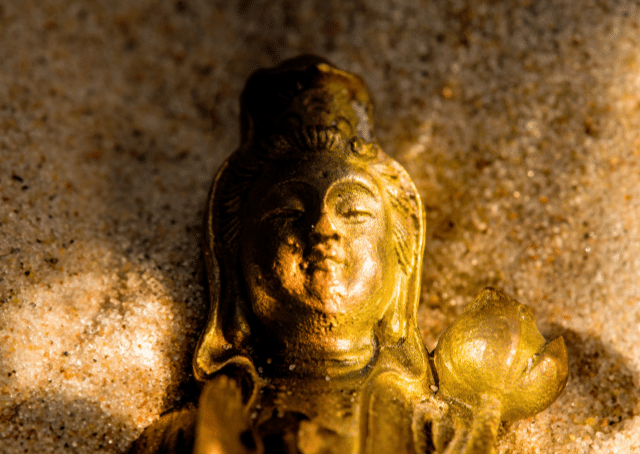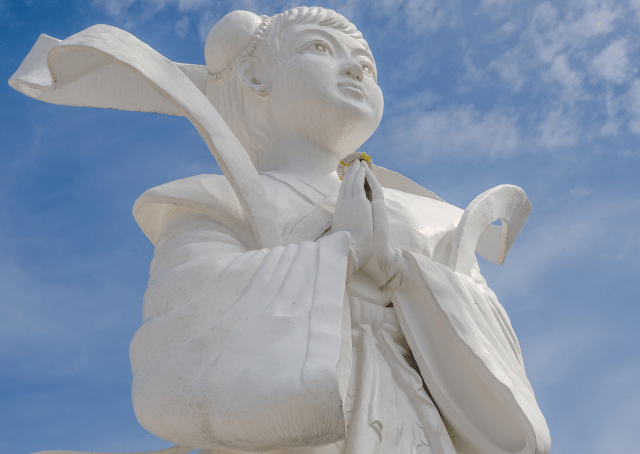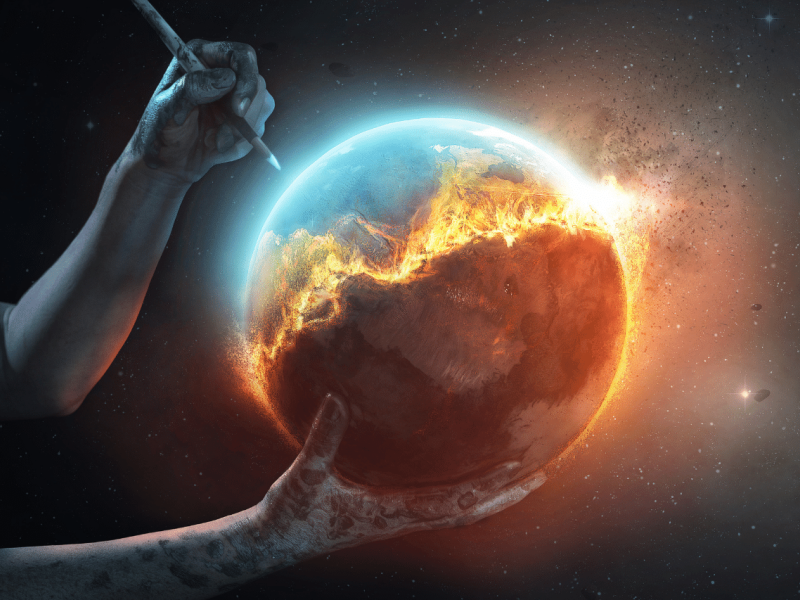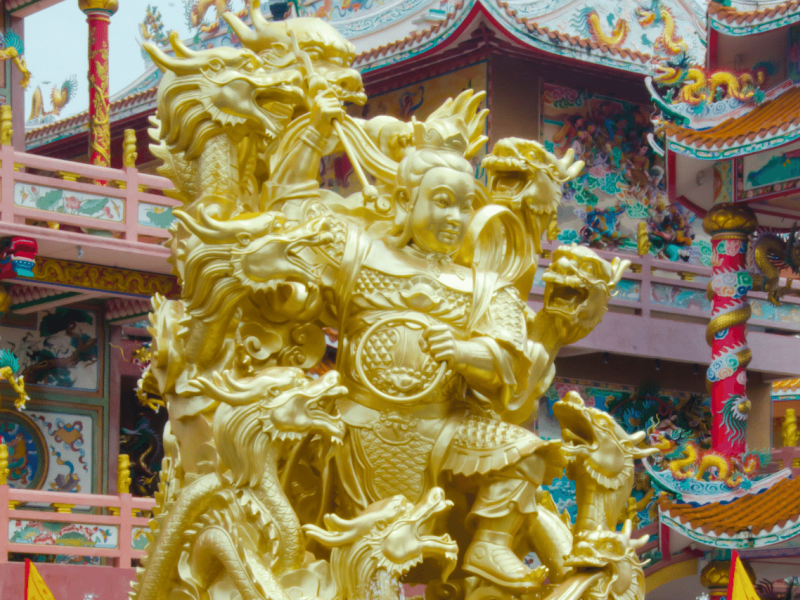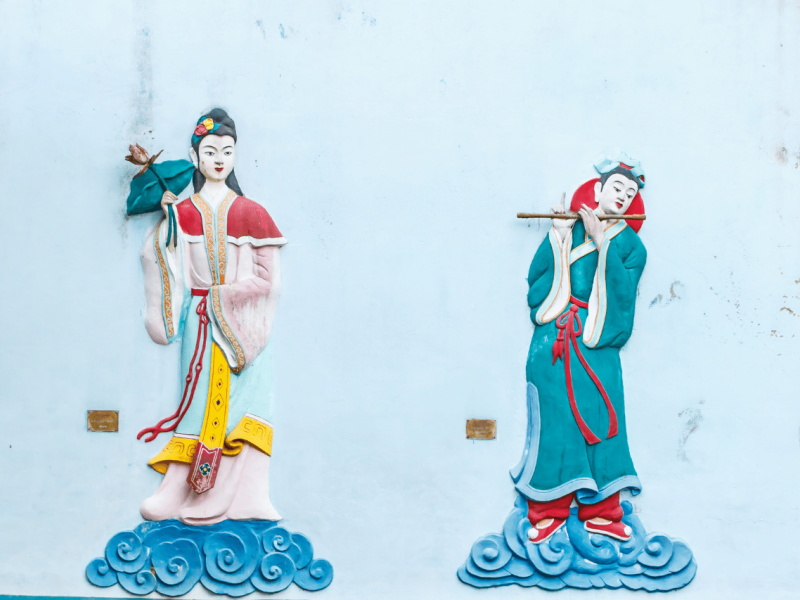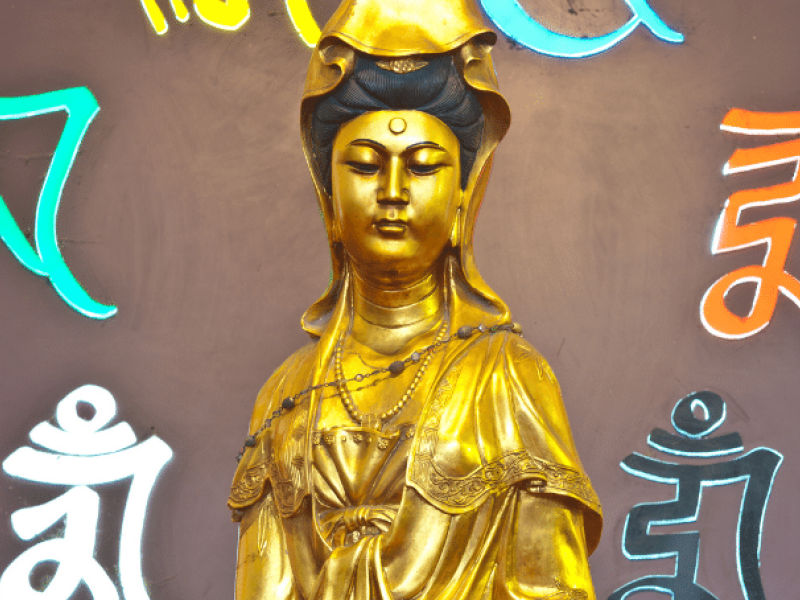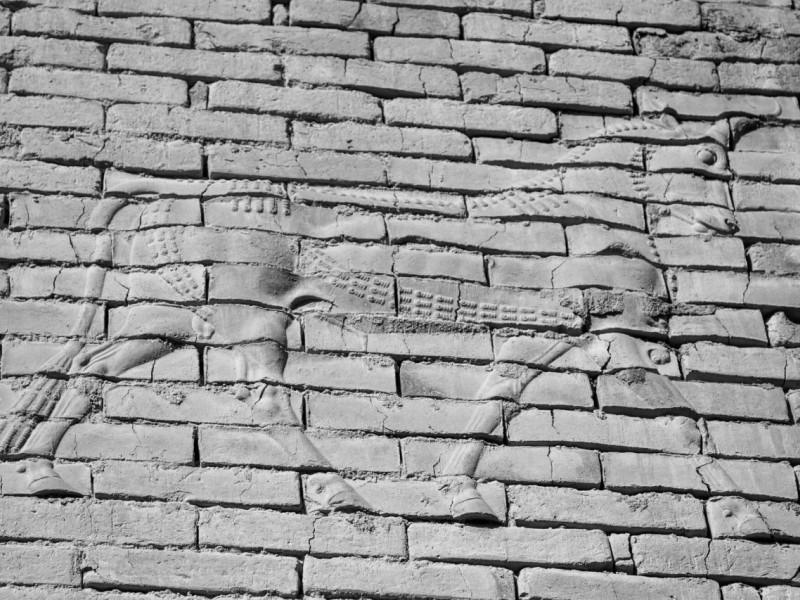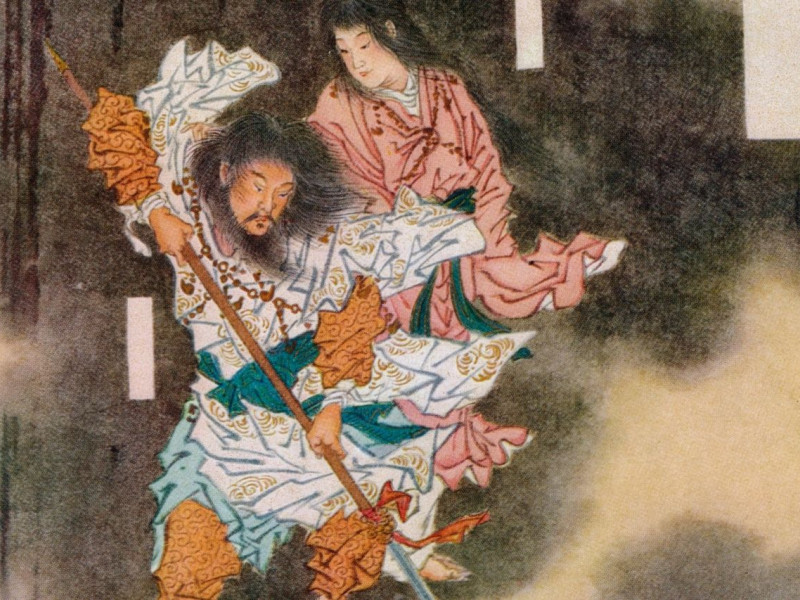Nuwa
Nuwa: Goddess of Creation and the Female Emperor of Mankind
In Chinese mythology, Nuwa is considered the goddess of creation and female emperor of mankind. As the sister and wife of Fuxi, Nuwa was the mother of all humans and was highly revered in China’s ancient societies. Nuwa was also credited with saving all of humanity from a great flood by repairing a hole in the sky.
In ancient China, societies were often highly matriarchal. As the goddess Nuwa was the mother of all humanity, she was considered one of the most important deities in the Chinese pantheon.
Therefore, there are many versions of Nuwa and the creation myth. In the earliest tales of Nuwa and creation, Nuwa’s brother and husband, Fuxi, was not present. Scholars have suggested that ancient Chinese societies believed childbirth to be a miraculous occurrence, as it wasn’t known that males were needed to help in the creation process, and therefore most children did not know their fathers.
As the male role in pro-creation came to be known, myths were then modified and Fuxi soon came to have equal, and then primary, importance. However, Nuwa is still a popular deity and is sought for help by women searching for marital help and fertility.
In artwork, Nuwa is typically depicted with a human face and a serpent’s body. She also appears as a woman with a lizard-like tail wearing traditional Chinese dress. In later representations, Nuwa and Fuxi were depicted with their tails intertwined while holding the symbols that represented yin and yang, the principles found in everything in the created universe.
Due to Nuwa’s position of honor in the Chinese pantheon, Nuwa was given a character completely unique to her name – wa. Nu is the character for woman and is often used as a prefix for goddesses. Sometimes Nuwa is reverently called Wa Huang, meaning Empress Wa.
Who is Nuwa in Chinese mythology?
In Chinese mythology, Nuwa is the mother goddess of all mankind. She is credited with creating humanity either through molding clay or through birth, and in later myths she is the sister and wife of Fuxi. She is also the repairer of the Pillar of Heaven, saving humanity from a terrible deluge.
Nuwa was created by her mother, the goddess Huaxu. While wandering the heavenly realms, Huaxu stepped into the footprint of the god of thunder and suddenly became pregnant. In the earliest versions of the myth, Huaxu gave birth in the earthly realm to only Nuwa. In later versions, Huaxu gave birth to Nuwa and Fuxi.
The story of creation
After the goddess Hauxu gave birth to Nuwa, Nuwa roamed the earth alone. The earth was young and teeming with life, filled with blossoming trees and flowers. The lush grounds were covered with many types of animals, the skies were filled with birds, and the seas were full of fish. But while the earth was beautiful, Nuwa felt very lonely, despairing that there was no one to accompany her.
While walking one day, Nuwa was struck by the idea of creating living beings herself. First, she made a new type of bird that could not fly away from her by creating chickens. Then she wanted to make an animal that would be a constant companion, and Nuwa created dogs. On the third day, she made sheep. Then pigs. Then cows. On day six, Nuwa made horses.
On day seven, while Nuwa walked along a riverbank, she stopped to admire her reflection. As she stroked the hair from her face, she was struck with inspiration and thought to make life forms that looked like her. Nuwa began to scoop and mold yellow clay into figures that had arms and could stand upright upon legs. As she worked the mud in her hands, the figures came alive and began to move and speak. Soon, the creations began to sing and dance around Nuwa while honoring her. All of the loneliness Nuwa had known went away.
Thrilled at her results and filled with passion for her creation, Nuwa desired to make more humans faster. She realized that she could drag rope across the mud and mass produce them, as creating every person individually was beginning to take too much time and hurting her hands. Soon she began to whip the rope, flinging mud and making people faster and faster.
The people Nuwa molded by hand became the wealthy nobility. The ones she made by dragging the rope became commoners. And finally, the ones Nuwa made by whipping the rope became the servant class.
As she finished making the last batch of humans it began to rain. Because some of these figures had not yet dried, the rain began to mark them and melt them. The last batch of humans that Nuwa created were damaged by the rain, and thus were the ancestors of those with sickness and deformities.
Nuwa and Fuxi
One day, the goddess Huaxu stepped into the footprint of the god of thunder, Leigong, as the gods of the heavens had begun to walk upon the newly separated earth. Due to stepping into the powerful god’s footprint, Huaxu found herself pregnant with twins, Nuwa and Fuxi.
Nuwa and Fuxi were born with the bodies of snakes and the faces of humans and bodies of snakes, however they could shapeshift into humanoid figures with two legs and a tail.
In one version of their myth, soon after the birth of Nuwa and Fuxi, a great flood struck the earth, and only Nuwa and Fuxi remained unharmed after escaping by boat. As the years passed, and with only each other to keep themselves company, Nuwa and Fuxi longed for companionship. Unwilling to violate the laws of heaven by sleeping together as brother and sister, they prayed together seeking a sign of approval.
As they were the only humanoids of their kind left upon the earth, the Emperor of Heaven accepted their union. After mating, Nuwa gave birth to humanity, becoming the matriarch of mankind by giving birth to a ball of meat. Nuwa and Fuxi then divided the meat into pieces shaped as humans and scattered them across the world.
In another version of the creation tale, found in the Classic of Mountains and Seas, Nuwa and Fuxi lived upon legendary Kunlun Mountain. Trying to keep warm on a cold night, the twins created two fires. As the fires burned, they eventually became one. While watching the fires merge, Nuwa and Fuxi joined together as husband and wife. Deciding that they would like to have children, they molded clay into the shape of humans. Using their powers to imbue the small figurines with life, Nuwa and Fuxi created humanity.
Later versions of the story of Nuwa and Fuxi lend a decidedly Taoist flavor. Duyi Zhi volume 3, written by LiRong over a thousand years ago, gives a slightly different account of the Chinese creation myth – “There was a brother and a sister living on the Kunlun Mountain, and there were no ordinary people at that time. The sister’s name was Nuwa.
The brother and sister wished to become husband and wife, but felt shy and guilty about this desire. So the brother took his younger sister to the top of the Kunlun Mountain and prayed: “If Heaven allows us to be man and wife, please let the smoke before us gather; if not, please let the smoke scatter.” The smoke before them gathered together. So Nuwa came to live with her elder brother. She made a fan with grass to hide her face. (The present custom of women covering their faces with fans originated from this story).”
As Nuwa and Fuxi both sprang from the same mother (Huaxu) at the same time, Taoists believed that Nuwa was the primordial personification of yin energy (female, gentle, intuitive, and receptive) and Fuxi was representative of the yang (male, fast, active, fierce). Coming together through intercourse symbolized the reunion of the yin ang yang energies which then united to create human existence.
After this moment, Fuxi was given a carpenter’s square linking his identity to the physical world, which is a yang concept – logic, linear thinking, and straight lines. Nuwa received a compass to represent the connection to the yin concept of the heavens – curves, circles, limitlessness, and abstraction. As the two were married, together they represented the unity of earth and heaven.
Nuwa and the Pillar of Heaven
One of the enduring myths of Nuwa is that of the repairing of the Pillar of Heaven.
In the early days of earth’s existence, the world appeared very different to how we understand it now. The earth was separated from the sky by four large pillars which had once been the arms and legs of the creator god, Pangu.
During these early days, the god of water, Gong Gong, and the god of fire, Zhu Rong, had been at odds for many years. Unable to hold back their fury at one another, they engaged in battle to determine who would be the god of the heavens. As they fought, fires raged and floods began to destroy the new earth.
Gong Gong was finally subdued by Zhu Rong, but in his rage, he slammed his head against Buzhou Mountain, one of the four pillars of heaven that had once been Pangu’s leg (the creator god). An earthquake shook the earth, and the pillar collapsed tearing a hole in the skies.
Looking upon the earth, Nuwa was filled with compassion for her children who were suffering. The new creation of earth had been torn to shreds from the battle between the water and fire gods. Fires burned out of control and water poured in a deluge from the hole in the sky. Nuwa desired to help her children, so she sought out the sky turtle, Ao.
Nuwa threw herself at Ao’s mercy, hoping for a miracle to save her many children. The sky turtle, feeling compassion for the mother of humanity, took Nuwa’s sword and cut off one of his legs, offering it as a substitute pillar.
After leaving Ao, Nuwa collected five colored stones (red, yellow, blue, white, and black) and melted them together to repair the hole in the heavens, while using Ao’s leg to replace the pillar. Waters poured on her relentlessly as she pushed the leg into position, and once in place, she shoved the ashes of burnt reeds into the remaining holes to plug the leaks.
The historian Sima Qian wrote – “The pillars of Heaven were broken and the corners of the earth gave way. Hereupon Nü Kua melted stones of the five colours to repair the heavens, and cut off the feet of the tortoise to set upright the four extremities of the earth. Gathering the ashes of reeds she stopped the flooding waters, and thus rescued the land.”
After replacing the pillar and stopping the deluge, Nuwa fell exhausted upon the earth and died.
In other versions of the Pillar of Heaven myth, when Nuwa attempted to fix the sky with the five melted stones she soon found that there was not enough to fix the hole in the sky. Knowing there was no other choice, Nuwa used her own body to fix the remaining hole, sacrificing her life to keep her children safe. With the hole repaired the deluge ended, and humanity was able to thrive and multiply again.
In all of the myths of the repair of the Pillar of Heaven, due to Ao’s leg being slightly shorter than the original pillars, Nuwa could not align the sky and earth the same as they were before. The sky slanted to the northwest. The earth slanted southeast.
Since the repair, the sun, moon, and stars all rise from the east and set to the west, and all of the rivers in China flow southeast. And due to the use of the multi-colored stones, the clouds of heaven now had different colors.
Empress Wa and the Pillar of Heaven
While many are familiar with the Chinese myth of the Three Sovereigns and Five Emperors, some areas of south China revere Nuwa as one of the Three Sovereigns, reigning as Empress Wa after the death of Fuxi and the rise of Shennong.
Tying into China’s strong ancient matriarchal beliefs, after the reign of Fuxi, the Empress Wa’s rule was challenged by a neighboring tribal chieftain. After defeating the chief in battle, Nuwa dragged her enemy to the peak of Mount Buzhou. Filled with shame, the chief banged his head upon the mountain, tearing a hole in the sky.
As the waters poured from the heavens, the entire world soon flooded, killing all of creation except for her army which was protected by her godhood. Nuwa then found five colored stones and melted them together, patching the hole in the sky.
In southwest China, many of the minority groups still celebrate Nuwa as their primary goddess and honor her with the yearly Water-Splashing Festival. There are many temples to Nuwa and Fuxi, but the largest temple to the pair lies in Hebei Province, believed to be the ancestral home of all humanity.
Nuwa, goddess and mother of humanity
In Chinese mythology, Nuwa is the mother goddess of all mankind. She is credited with creating humanity either through molding clay or birth, and in later myths she is the sister and wife of Fuxi. She is also the repairer of the Pillar of Heaven, saving humanity from a terrible deluge.
As the creator of mankind, Nuwa is considered one of the most important gods in the Chinese pantheon
There are many versions of Nuwa’s creation myth. In the earliest tales, Nuwa creates humanity alone. In later versions, Nuwa creates humanity with her brother and husband, Fuxi
Nuwa is typically depicted with a human face and a serpent’s body. When represented in humanoid form, she has a lizard’s tail. When depicted together, Nuwa and Fuxi typically have their tales intertwined and hold the symbols of yin and yang
Nuwa’s name is made up of the character of nu (woman) and due to her position of honor, a character specific to her – wa. Sometimes she is reverentially called Wa Huang, meaning Empress Wa
The earliest creation myths show Nuwa creating humanity from yellow clay. Later myths, with a Taoist slant, show Nuwa creating mankind through intercourse with her twin brother as a personification of the uniting of yin and yang energies
One of the most enduring legends of Nuwa depicts her as the savior of humanity, repairing the Pillar of Heaven which is destroyed by a defeated enemy
Some regions of south China honor Nuwa as the Empress Wa, and as one of the Three Sovereigns of ancient China
Nuwa is still honored today in temples and festivals throughout the Chinese speaking world. She is also sought by those wishing for marital help and fertility
As the creator and savior of mankind, Nuwa holds a hallowed place in the Chinese pantheon of gods. When her adherents look into the colored skies, or in the flowing rivers, or in their very flesh and bones, they still see the mark of their creative goddess, Wa Huang.
